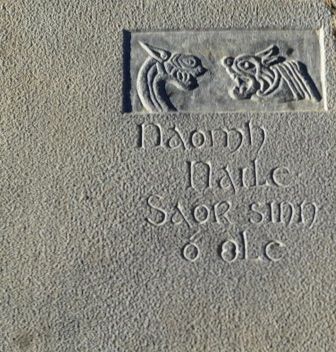Crohane
(NEAR BALLINGARRY)
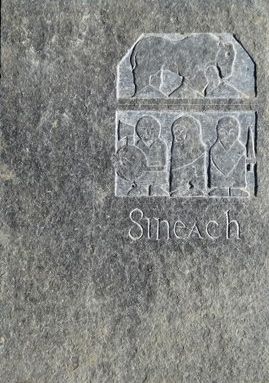
Her ancient Church and Holy Well is now the site of the Church of Ireland at Crohane. St Sineach’s Feast Day is 5th. October and was celebrated with a Pattern Day up to 1810 when the local Parish priest banned it due to activities not in keeping with celebrating the sanctity of the holy Saint. The illustration on the panel was inspired by the legend whereby St Sineach had her only cow taken by Guaire, son of Colman King of Connaught. Sineach complained to Diarmuid, King of Ireland.
“Battle of Crohane”
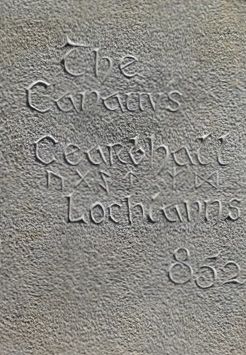
The great Battle of Crohane was in 852. The men of Munster sent messengers to Cearbhall (son of Dunlaing) to bring Danes to defend them against the Lochlanns (Norsemen). In 872 Cearbhall became King of the Danes A history of Sir Kieran published 1992, about Clareen Parish, Co. Offaly, states that Cearbhall was buried in Sir Kieran's churchyard in 885. There is a burial slab with a Celtic Cross marking his grave..
“Magh Abhna”
(NEAR BALLINGARRY)

It is situated in the Townland of Shangarry. The outline of the church site can be seen in the corner of a field adjoining the fort of Knockroe.
During long dry spells the foundations of six or more circular structures are visible at the top of the adjoining field – these are thought to be beehive huts.
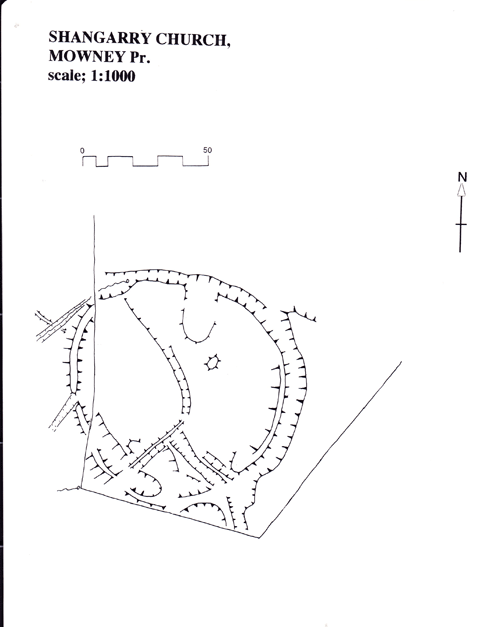
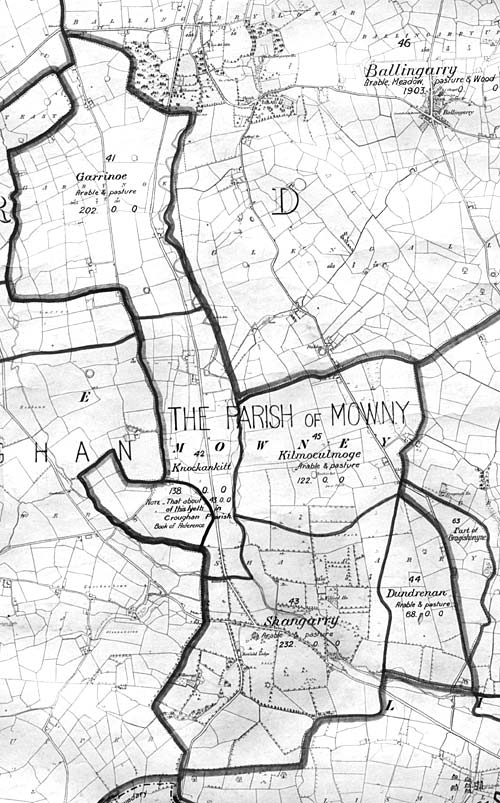
“Cill Naile”
